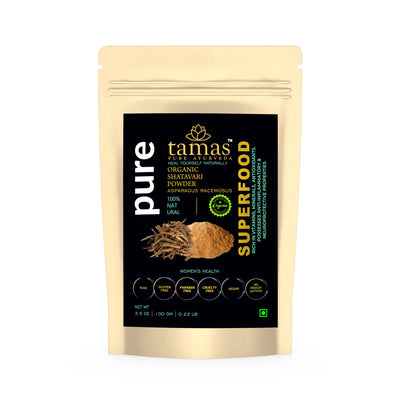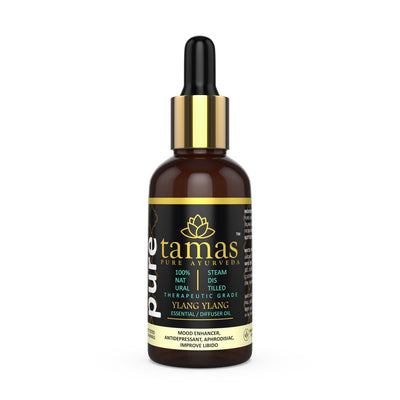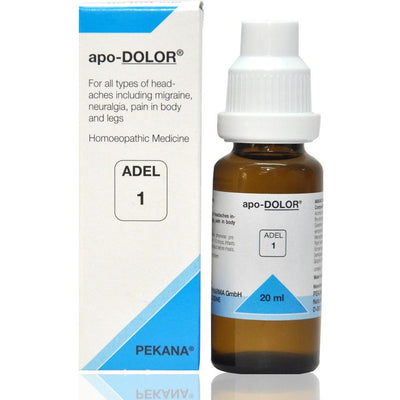
Kottamchukkadi Thailam
Kottamchukkadi Thailam is a supplementary medicine to reduce swelling. It consists of a combination of ayurvedic herbs processed as per the ancient Sahasrayogam texts. It is widely used in ayurvedic procedures like Abhyanga, Kativasti, and Pichu to help in joint pain treatment, swelling, and stiffness.
Kottamchukkadi joint pain oil for joint inflammation contains ingredients known to be used in the treatment of arthritis, spondylosis, and sciatica. It is helpful in the treatment of a Vata disorder that affects the joint and causes pain. All types of swelling, whatever may be the cause can be treated by using this oil. Kottamchukkadi Oil contains key ingredients specifically used in Ayurvedic oil for knee pain and a general joint pain relief oil.
The knee pain oil is meant for use for adults. It should be massaged on the area affected or on the entire body before taking a bath. It is a 100% natural, herbal oil that has no chemicals.
Ingredient
Kottamchukkadi Thailam uses the following ingredients:
Kottam
Vayambu
Sigru
Karthotti
Swelling is usually caused by an injury, in which case it is temporary. Swelling due to problems in the joints can last for a long time and can be very painful. The joints in the body connect bones. Joints are present in the knees, ankles, feet, arms, hips, and other such parts. There are tissues that act as a cushion for the joints and protect them. Due to various reasons, fluid accumulates in the joint tissues. This causes swelling and leads to pain. There are various reasons for swelling, it could be due to arthritis, gout, or any other illness.
The musculoskeletal system is the system composed of bones and muscles. They work together to move the body. The joints are critical to this ability to move. Most joint problems cause stiffness causing the inability to move. When the joints become inflamed they also become swollen.
Ayurveda’s view on joint swelling
Ayurveda uses the concept of doshas to explain how diseases occur. There are three Doshas; Vata, Pitta, and Kapha. The Vata Dosha is an airy Dosha. The Pitta Dosha is hot and fiery and the Kapha is cold and heavy. Imbalance in the Vata dosha can affect the joints and the bones. The joints connect bones and have empty space (air) that is associated with Vata. Asthi dhatu refers to the bone tissue, while the nerves are called majja dhatu. These tissues have a relation to the joints.
Joints are lubricated by a fluid known as shleshmaka Kapha. All the tissues need nutrition and this brings us to the concept of Agni or digestive fire. When digestion is efficient, the nutrients from the ingested food is absorbed by the body that nourish all the tissues. The fluids in the joints also need nourishment. This process of digestion can only be efficient when the Agni in the body is strong. Improper diet and problems in the digestive system weaken the Agni. Agni is stronger when the sun is at its highest point in the sky. This is why Ayurvedic tradition recommends the heaviest meal to be taken at midday. When the Agni is weak, the process of metabolism becomes inefficient. This allows ama or toxins to be formed in the body. Ama is located in the digestive tract and is kept under check.
When Agni becomes weak, ama moves around in the body and occupies the empty space in the joints. This causes swelling in the joints and leads to severe pain. Vyana Vata is associated with joints that are not nourished well. A cracking sound can be heard in the joints due to the shleshaka Kapha drying up. This reduces lubrication and causes the cracking sound. If this problem is not resolved, it will lead to the joints becoming immobile completely.
The medicine to reduce swelling in Ayurveda depends on the cause. Haritaki, Amalaki, Bibhitaki are some of the ayurvedic medicines used to treat swelling and joint pain. Some other recommended treatments are:
Causes of swelling
There are different causes of swelling. They include:
Gout is another condition where uric acid crystals may be deposited in the joint to problems with the excretion of uric acid. This causes swelling and severe pain.
Other diseases like spondylitis, sarcoidosis, and lupus also cause inflammation and joint swelling.
Kottamchukkadi Thailam is a supplementary medicine to reduce swelling. It consists of a combination of ayurvedic herbs processed as per the ancient Sahasrayogam texts. It is widely used in ayurvedic procedures like Abhyanga, Kativasti, and Pichu to help in joint pain treatment, swelling, and stiffness.
Kottamchukkadi joint pain oil for joint inflammation contains ingredients known to be used in the treatment of arthritis, spondylosis, and sciatica. It is helpful in the treatment of a Vata disorder that affects the joint and causes pain. All types of swelling, whatever may be the cause can be treated by using this oil. Kottamchukkadi Oil contains key ingredients specifically used in Ayurvedic oil for knee pain and a general joint pain relief oil.
The knee pain oil is meant for use for adults. It should be massaged on the area affected or on the entire body before taking a bath. It is a 100% natural, herbal oil that has no chemicals.
Ingredient
Kottamchukkadi Thailam uses the following ingredients:
Kottam
- Kottam is Sassurea lappa, also known as kushta or costus root
- It can balance both Kapha and Vata
- It is one of the preferred oils for external massage
- It has inflammatory and pain-relieving properties
- It is used in Ayurvedic medicine to treat gout, respiratory problems, skin issues, for increasing sperm count and in fat reduction
- It is useful in traditional medicine as a hepato-protective, antiviral, anti-inflammatory, analgesic and anti-hypertensive herb
- Chukku or Adraka is Zingiber officinale, known commonly as ginger
- It can balance Kapha
- It is useful in reducing swelling and inflammation
- It is used in the treatment of rheumatoid arthritis
- Ginger is given the name ‘universal medicine’ as per the ancient texts of Ayurveda
- It is used to support Agni, the digestive fire and aids in proper digestion and is also an immunity booster
- It helps to eliminate and prevent Ama formation. This makes it very good for Ayurvedic treatment of Ama related problems.
- It is heated in nature and calms the Vata Dosha and balances Kapha Dosha
Vayambu
- Vayambu or Vacha is Acorus calamus known as myrtle grass
- It is useful in balancing Vata and Kapha doshas
- It is very useful to treat pain as a result of Vata imbalance
- It is useful Ayurveda as anti-inflammatory, anti-epileptic and digestive
- It is used in traditional medicine to support digestion, relieve bloating, improve intelligence, improve voice, help in psychological disorders, neuralgia
Sigru
- Sigru or Moringa oleifera is drumstick, a common vegetable
- It is one of the plants used in panchakarma treatment for cleansing
- It balances Vata and Kapha doshas
- It is anti-inflammatory and helpful in reducing pain
- It is rich in antioxidants, vitamins, and minerals, it is used in many traditional medicines
- It is used in Ayurveda for its properties of being an antihelminthic, anti-arthritic, antirheumatic, antioxidant, anti-inflammatory, adaptogenic, immunomodulatory, anti-stress, mucolytic, analgesic, cardiac stimulant, anti-hyperglycemic, emmenagogue, and a digestive stimulant
Karthotti
- Karthotti or Caparris Spinosa is known as Himsra
- It balances Vata and Kapha dosha
- It is useful to reduce inflammation and pain
- It is used to treat swelling and pain due to Vata disorders like sciatica and spondylosis
- It is used in the Ayurvedic treatment of oedema, swelling, abscess, asthma, and anorexia
- It is useful in Ayurvedic formulations to improve digestion, appetite, taste and reduce swelling and inflammation. It is also useful in the traditional treatment of colds, cough, chronic respiratory issues, and asthma.
Swelling is usually caused by an injury, in which case it is temporary. Swelling due to problems in the joints can last for a long time and can be very painful. The joints in the body connect bones. Joints are present in the knees, ankles, feet, arms, hips, and other such parts. There are tissues that act as a cushion for the joints and protect them. Due to various reasons, fluid accumulates in the joint tissues. This causes swelling and leads to pain. There are various reasons for swelling, it could be due to arthritis, gout, or any other illness.
The musculoskeletal system is the system composed of bones and muscles. They work together to move the body. The joints are critical to this ability to move. Most joint problems cause stiffness causing the inability to move. When the joints become inflamed they also become swollen.
Ayurveda’s view on joint swelling
Ayurveda uses the concept of doshas to explain how diseases occur. There are three Doshas; Vata, Pitta, and Kapha. The Vata Dosha is an airy Dosha. The Pitta Dosha is hot and fiery and the Kapha is cold and heavy. Imbalance in the Vata dosha can affect the joints and the bones. The joints connect bones and have empty space (air) that is associated with Vata. Asthi dhatu refers to the bone tissue, while the nerves are called majja dhatu. These tissues have a relation to the joints.
Joints are lubricated by a fluid known as shleshmaka Kapha. All the tissues need nutrition and this brings us to the concept of Agni or digestive fire. When digestion is efficient, the nutrients from the ingested food is absorbed by the body that nourish all the tissues. The fluids in the joints also need nourishment. This process of digestion can only be efficient when the Agni in the body is strong. Improper diet and problems in the digestive system weaken the Agni. Agni is stronger when the sun is at its highest point in the sky. This is why Ayurvedic tradition recommends the heaviest meal to be taken at midday. When the Agni is weak, the process of metabolism becomes inefficient. This allows ama or toxins to be formed in the body. Ama is located in the digestive tract and is kept under check.
When Agni becomes weak, ama moves around in the body and occupies the empty space in the joints. This causes swelling in the joints and leads to severe pain. Vyana Vata is associated with joints that are not nourished well. A cracking sound can be heard in the joints due to the shleshaka Kapha drying up. This reduces lubrication and causes the cracking sound. If this problem is not resolved, it will lead to the joints becoming immobile completely.
The medicine to reduce swelling in Ayurveda depends on the cause. Haritaki, Amalaki, Bibhitaki are some of the ayurvedic medicines used to treat swelling and joint pain. Some other recommended treatments are:
- Ayurveda recommends cleansing through panchakarma. It can help to remove ama and restore the power of the Agni. Keeping digestion, Agni and metabolism strong, ensures that more Ama is not formed.
- Cleaning the colon is a recommended treatment as it can help to get rid of ama.
- The use of medicated oil prepared from herbs can be used to get relief from joint pain. Massage using this oil is recommended to improve symptoms. Relieving the inflammation at the joint also reduces the swelling.
- Abhyanga massage is recommended to keep the joints in good health. Exercise, stretches, and practices such as Yoga help to restore and maintain mobility. Leading an active lifestyle and maintaining a healthy body weight also relieve the joints of stress.
- Yoga is extremely helpful in keeping the muscles stretched and the joints in good condition.
- A proper diet that addresses dosha imbalance can help in effectively treating joint pain and swelling. This Ayurvedic diet must be tailored to avoid aggravating the offending Dosha in the person. Food habits that ensure digestive efficiency should be implemented. Food should be warm and freshly made. Preserved or cold food should be avoided. A balanced diet with sufficient water intake is good to nourish the body. One must also change habits that might be the cause of further aggravating the Doshas.
Causes of swelling
There are different causes of swelling. They include:
- External swelling can happen due to an allergic reaction.
- Insect bites can cause swelling in the area of the insect bite or all over the body.
- Infections are another reason for swelling.
- Swelling can also be because of fluid retention in the body. This can be due to kidney problems or heart problems.
- Cancer patients can have swelling due to the disease or due to the effects of the treatment.
- Fractures and injuries can cause swelling, as can sprains.
Gout is another condition where uric acid crystals may be deposited in the joint to problems with the excretion of uric acid. This causes swelling and severe pain.
Other diseases like spondylitis, sarcoidosis, and lupus also cause inflammation and joint swelling.
You may also like
More from Kerala Ayurveda
More from Aasaan
Recently viewed




















